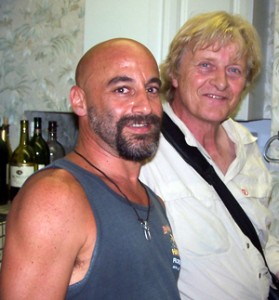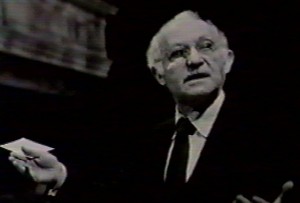The Scott Rogers Technique:
Because different actors respond to different methods of teaching, we tailor an actors training to the individual actor. By focusing on what works for the individual, we’ve been able to greatly accelerate the pace and progress of actor training.
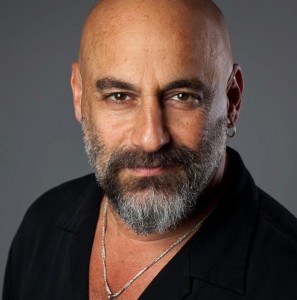 At SRS we give concrete steps to follow so you can confidently break down a script and bring the character to truthful, spontanious life. Scott’s Technique focuses first on his “Four-Steps” for breaking down any script. This is followed by his two-step process for creating a “moment before” that anchors you into the imaginary circumstances while propelling you to fight for your objective – so that you are completely “in” from before you hear the word “Action”! But these “concrete steps” are not written in stone (pun intended). You accomplish these steps by using the teachings of all the master teachers listed below. So even these specific steps are tailored to the individual actor and what works best for them.
At SRS we give concrete steps to follow so you can confidently break down a script and bring the character to truthful, spontanious life. Scott’s Technique focuses first on his “Four-Steps” for breaking down any script. This is followed by his two-step process for creating a “moment before” that anchors you into the imaginary circumstances while propelling you to fight for your objective – so that you are completely “in” from before you hear the word “Action”! But these “concrete steps” are not written in stone (pun intended). You accomplish these steps by using the teachings of all the master teachers listed below. So even these specific steps are tailored to the individual actor and what works best for them.
Students will develop a deeper understanding of how to get from a page in a script to a real and captivating character that draws the audience in. Our students learn through scene study, audition drills, camera exercises, specially designed improvisations, and physical as well as imagination exercises to give you the ability to trigger real and truthful emotions on demand. Students are here to experiment–to grow.
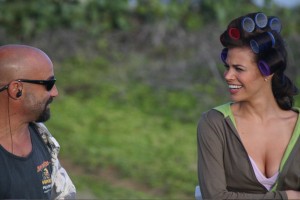
Coaching Brooke Burns
The classroom is sacrosanct–a place where trial, error, and yes – Failure, is not just acceptable but mandatory. We believe that if you aren’t making mistakes and failing (at least occassionally) you simply aren’t trying hard enough to expand your comfort zone. You see, when you’re working on camera or in front of an audience, it’s got to work–you must be excellent when the director says “Action”. However, if you do nothing but perform, then you are stuck with what you already know you’re good at. You can’t take a chance and push your limits, because you’re not sure you’ll be able to deliver the goods when the camera’s roll.
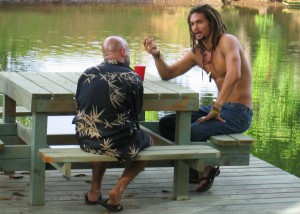
Coaching Jason Momoa
This is where class comes in. Class gives you something you never get in performance – the opportunity to go out on a narrow ledge and risk falling. But there’s no audience in the classroom (we never allow “audits”)–just a sympathetic teacher and fellow students who are on that narrow ledge as often as you are. You get the opportunity to expand the limits of your own abilities (your “comfort zone”), in a safe and supportive environment. Quite simply; Scott’s students become better actors. Fast.
SRS also uses exercises Scott has discovered from all around the world, to help an actor work more efficiently on camera. For example, we use exercises from South American, Augusto Boal and others to develop focus, concentration and imagination to meet the specific demands of working on camera. These exercises weren’t designed for on-camera actors but Scott has found them to be absolutely unique in their ability to train actors for the specific rigors of working on camera.
Paying proper respect to our History:
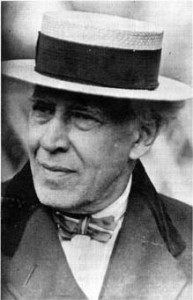
Constatine Stanislavski
In order to understand the methodology of what we teach in our acting program, we must first revisit the beginnings of modern acting. Modern realistic acting was essentially created by Constantin Stanislavski at the Moscow Art Theatre.

Richard Boleslavsky
The most obvious change that Stanislavski caused in modern acting was to change acting from essentially presentational to something experiential. In other words you didn’t just “show” your feelings, you “felt” them. Stanislavski trained actors for theatre, but he had no idea how the impact of his discoveries would affect actors in film. For example, when Stanislavski talks about the difficulties of giving an inspired performance night after night, the same difficulties apply to giving an inspired performance take after take, when shooting a film.
Stanislavski’s student Richard Boleslavsky, brought this new style of acting to America, teaching Lee Strasberg, Harold Clurman, Stella Adler, among others. These “disciples” took what Stanislavski taught and interpreted it for American actors.
At Scott Rogers Studios, we take the teachings of Stanislavski and his “disciples” and re-interpret them for the application of acting on-camera. Founder Scott Rogers has been hired to coach actors, by studios, production companies, directors, and celebrities for literally thousands of hours, on the sets of movies and national TV shows. As an acting coach, Scott has had to work with actors from very different backgrounds. Some were trained by Meisner some by Strasberg. Some are followers of Stella Adler and some are Uta Hagen devotees. What he’s found is that, although the approaches vary greatly, all are capable of giving honest, inspired, performances.
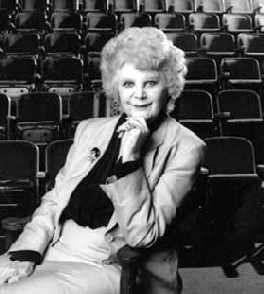
Stella Adler
At SRS we focus on two key areas of preparation:
Research…
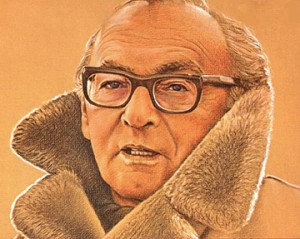
Sanford Meisner
Research is learning everything you can about the character. Their background, influences, religion, economic, physical pathology, yes their dialogue, and much, much more. Once you’ve learned all about your character you learn about everyone your character speaks to and speaks about – to the same extent. The same goes for all the places your character has been and refers to. Think about it, when you talk to your friends you automatically know all this information – and more! You need the same safety net of knowledge in order give an honest performance and feel confident enough to cut loose and “swing with abandon”.
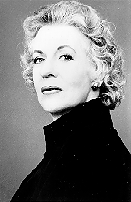
Uta Hagen
…and Imagination.
Research however, is just the first part. When you have all the research in place, then and only then are you ready to breathe life into your character. Research is the brainwork but imagination is where the real creativity comes in. Through intense imagination work like emotional preparation exercises, Affective memory, improvisations, Object and other exercises we’ve designed to trigger real emotions in the actor, you learn to control the triggers that allow you to feel honest, real emotions, on demand – take after take.
The research work is time consuming but not terribly difficult. Imagination work, on the other hand, can happen lightning fast but is often the hardest, most draining (although also the most rewarding) work an actor ever does.

